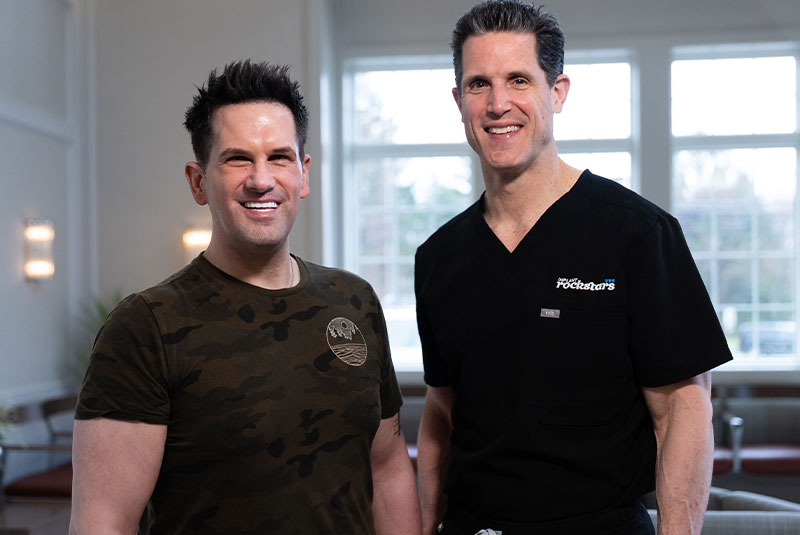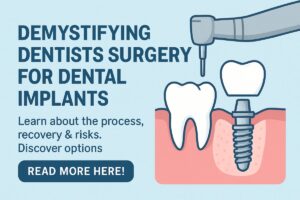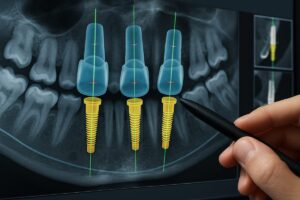Missing a molar or premolar can make eating and speaking harder and can speed up jawbone loss. An implant back tooth is a permanent replacement that looks and acts like a natural tooth. This guide explains the process, typical costs, and practical ways to save so you can decide if an implant for a back tooth is right for you.
Why get an implant back tooth?
Replacing a back tooth with an implant restores chewing force and helps keep your bite stable. A single tooth implant preserves the jawbone where the tooth root used to be, which protects neighboring teeth and lowers the risk of shifting or future tooth loss. Speech is usually unaffected by molars, but overall mouth function improves when all teeth are supported.
Compared to other options:
- Bridge: A bridge can work well but requires shaving down adjacent teeth and does not prevent bone loss under the missing tooth.
- Removable partial denture: Cheaper up front but less stable, needs regular removal and cleaning, and can stress nearby teeth and gums.
Common candidates are adults in good general health who have healed from any active gum disease. Your dentist will check medical history, oral health, and take imaging to confirm enough bone or to plan grafting if needed.
What to expect: step-by-step for an implant back tooth
Pre-op: Start with a consultation and dental exam. A 3D CT scan maps bone volume, sinus position, and nerve location so the implant can be placed safely and at the right angle. These scans show whether bone grafting is needed and help plan the implant size and position.
Surgery day: The implant is placed into the jawbone under local anesthesia, with sedation options available if you prefer. The procedure for a single back tooth often takes 30–90 minutes. Expect some swelling and mild discomfort after, controlled with meds and cold packs.
Healing and restoration: The implant must integrate with bone (osseointegration), usually 3–6 months for a back tooth. You may receive a temporary crown or be asked to avoid heavy chewing on that side. Once healed, a final crown is attached. Typical follow-ups include checks at 1–2 weeks, at intervals during healing, and for the final crown fit. Watch for normal signs—mild swelling and soreness—or warning signs like severe pain, persistent pus, fever, or a loose implant, which need prompt care.
Cost factors and practical ways to save on an implant for a back tooth
Main cost drivers:
- Implant type and brand: Premium systems cost more but may offer specific advantages.
- Bone grafting or sinus lift: Adds clinic time, materials, and healing stages.
- Number of appointments and visits: More visits raise fees for lab work and chair time.
- Crown material: Porcelain, zirconia, or layered restorations differ in price.
- Provider experience: Specialists often charge more but may reduce risk in complex cases.
Ways to save:
- Ask about financing plans or low-interest payment options.
- Consider phased treatment—do the implant first, delay the crown if needed.
- Use one provider for both surgery and crown—this can cut lab and coordination costs.
- Check if your office offers fixed-fee packages that include CT scans or consults.
- Talk to your insurer about coverage limits and whether partial benefits apply.
Quick tips: get a clear written estimate that lists each fee, confirm whether CT scans and consults are included, and compare complication rates and long-term outcomes—not just the lowest price.
How to pick the right provider — complex cases and what this practice offers
For difficult back-tooth cases, specialist training and experience matter. A board-certified implant specialist reduces the chance of complications and can offer advanced techniques when bone is limited. Complex options include zygomatic, pterygoid, transsinus, and subperiosteal implants for patients told they have “no bone.”
Dr. Michael Fioritto is one of only about nine board-certified implant specialists in Ohio. He treats complex cases using advanced implant options and a fully digital workflow. The practice uses facial, intraoral, and photogrammetry scanners for precise planning and offers All-on-X expertise. Free consultations and CT scans are available.
Patient logistics for visitors: many out-of-state patients meet the doctor the day before surgery and return home the next day. Local dentists typically handle routine postop checks, and patients return months later for final follow-up. If you travel for care, bring referral records and recent x-rays, a list of medications, contact info for your local dentist, and arrange a ride home. Plan for one extra day for comfort and follow any pre-op fasting or medication instructions the clinic gives.
If you’re considering an implant back tooth, schedule a consultation or request a CT scan to find out if this is the best option for you. Our team can review treatment steps, costs, and travel logistics so you can make a confident plan.






